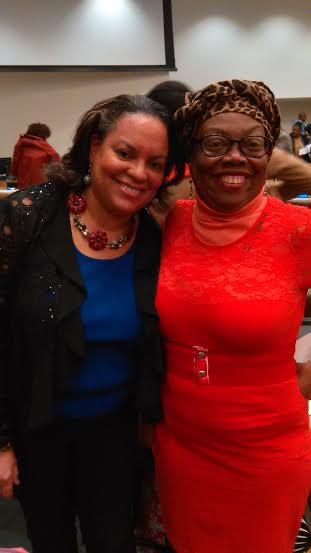African Jamaican poet Claude McKay was born in Clarendon, Jamaica on September 15, 1889 and immigrated to the USA in 1912. He wrote and published "If We Must Die" in 1919 during the "Red Summer."
*********************************************************************
On
Sunday July 27, 1919, Eugene Williams a 17 year old African American
youth was drowned by a White mob. He was with friends in Lake
Michigan when they crossed the “imaginary segregation line”
between the “White” and “Colored” beach. A White mob drowned
the 17 year old by attacking him with rocks/stones. White police
officers refused to arrest the White men identified by African
American eyewitnesses. Instead the police arrested an African
American man about whom a White person complained. This injustice and
inequitable treatment while a 17 year old African American lay
lifeless after a brutal and vicious attack by a White mob, set off a
three day slaughter of African Americans in Chicago. White gangs
roamed African American neighbourhoods attacking African American
men, women, children and property with the tacit approval of law
enforcement who were all White. It was felt that White police engaged
in this criminal activity also.
The
stoning and killing of Williams occurred after he and a group of
friends were on a makeshift raft that drifted into the area White
people considered their territory of the Lake Michigan area. Sunday
July 27, 1919 was a scorcher supposedly 96 degrees in the shade!
African American and White people headed to the beach on that day for
relief from the heat. When the White men began to pelt the African
American teenagers whose raft had inadvertently drifted into the
“White waters” the teenage boys abandoned the raft and swam to
safety except Williams who could not swim. His companions could not
rescue him from the onslaught of murderous White stoning because
their lives would have been endangered. Members of the “Hamburg
Athletic Club” a White supremacist Irish-American organization were
identified as the instigators of the White mob stoning and killing of
Williams.
The
summer of 1919 would become known as “Red Summer” because of the
amount of African American blood spilt through murderous attacks by
Whites throughout the USA. African Americans were attacked and killed
by Whites throughout the USA including Washington, D.C.; Knoxville,
Tennessee; Longview, Texas; Phillips County, Arkansas; Omaha,
Nebraska and Chicago, Illinois. The indiscriminate killing of African
Americans by Whites prompted African Jamaican poet Claude McKay to
write and publish his famous poem “If We Must Die” in which he
wrote:
“If
we must die—let it not be like hogs
Hunted
and penned in an inglorious spot,
While
round us bark the mad and hungry dogs,
Making
their mock at our accursed lot.
If
we must die—oh, let us nobly die,
So
that our precious blood may not be shed
In
vain; then even the monsters we defy
Shall
be constrained to honor us though dead!
Oh,
Kinsmen! We must meet the common foe;
Though
far outnumbered, let us show us brave,
And
for their thousand blows deal one deathblow!
What
though before us lies the open grave?
Like
men we’ll face the murderous, cowardly pack,
Pressed
to the wall, dying, but fighting back!”
The
poem first published in July 1919 was subsequently published in
McKay's 1922 collection “Harlem Shadows.”
McKay
who at the time lived in Harlem New York urged African Americans
under attack, outnumbered and outgunned, to fight back. The
African-American population in Chicago as elsewhere in the USA was
outnumbered and outgunned by Whites who had superior weapons and were
supported by well-armed White paramilitary organizations.
During
that dreadful “Red Summer” when Whites indiscriminately
slaughtered African Americans in towns, counties and large cities at
least 52 African-Americans were lynched and burned to death. Hundreds
of African-Americans were killed and thousands were injured. Tens of
thousands were forced to flee their homes and workplaces throughout
the USA. African American communities were devastated by the ethnic
cleansing of “Red Summer 1919.” White mobs including sailors on
leave, immigrant slaughterhouse workers and southern farmers felt
free to attack and kill African Americans.
In
2017 although there have not been gangs of Whites targeting African
Americans burning their homes and businesses and killing them there
has been a decades long targeting of Africans in North America by
various police forces. African Canadians are targeted through the
egregious practice of “carding” in Toronto and other cities. The
most recent atrocity committed against an African Canadian male youth
made the news very recently when a White police officer and his
brother were charged after they reportedly beat a 19 year old causing
extensive damage to his face including the loss of his left eye.
Beginning
on July 27, 1919 groups of White people spent three days freely
roaming the streets of Chicago dragging African Americans out of
their cars, their homes, their workplaces and even off public
transportation, beating and killing them at will. That was 98 years
ago. With the new American regime in place and some of the bold
instances of anti-Black/anti-African racism displayed on YouTube,
Facebook and other online venues, caution and vigilance must be
exercised to prevent the possibility of a “Red Summer” in the
21st
century.
Red Summer 1919 Omaha
Red Summer 1919 Chicago
Red Summer 1919 Chicago a white mob drags an African American man off public transportation.
Red Summer 1919 a white mob attacks the vehicle of an African American family before dragging them out.









































